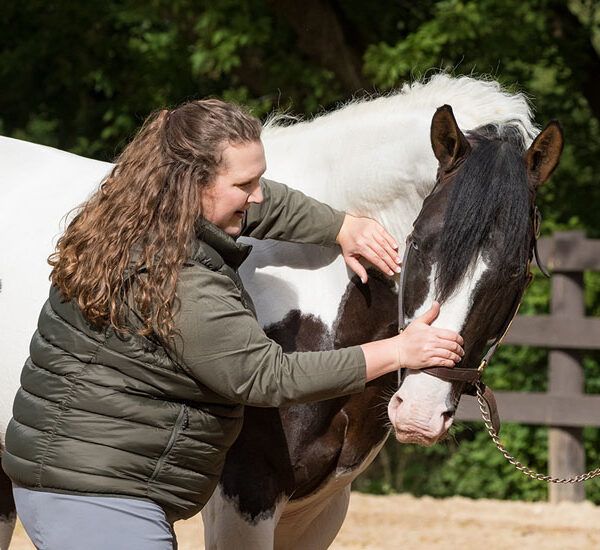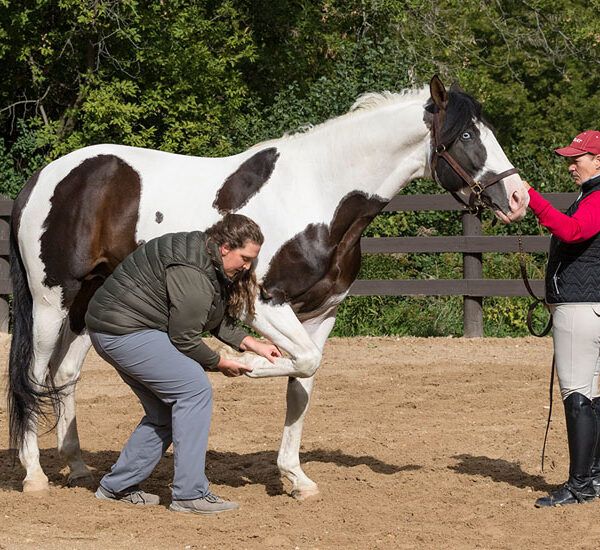Veterinary Spinal Manipulation Therapy
Veterinary Spinal Manipulation Therapy (VSMT) is an effective treatment used to keep your horse comfortable and moving well, no matter if their job is taking you down a trail or into the show ring.
VSMT vs Chiropractic
Why is VSMT not called ‘chiropractic’? VSMT is performed by a veterinarian who has had specific training in spinal manipulation on animals. Human chiropractors can take specific training in spinal manipulation on animals as well, but currently in Wisconsin, only they are allowed to use the word ‘chiropractic’ to describe their treatments. Laws do vary from state to state, but it is essential that the professional treating your animal is licensed in their respective occupation AND has successfully completed a certification program designed for animal chiropractic. Any animal receiving chiropractic care should also have an exam and diagnosis from a veterinarian first. I received a certification in Veterinary Spinal Manipulation Therapy from the Healing Oasis Wellness Center in 2015 and am licensed to practice veterinary medicine in the state of Wisconsin.
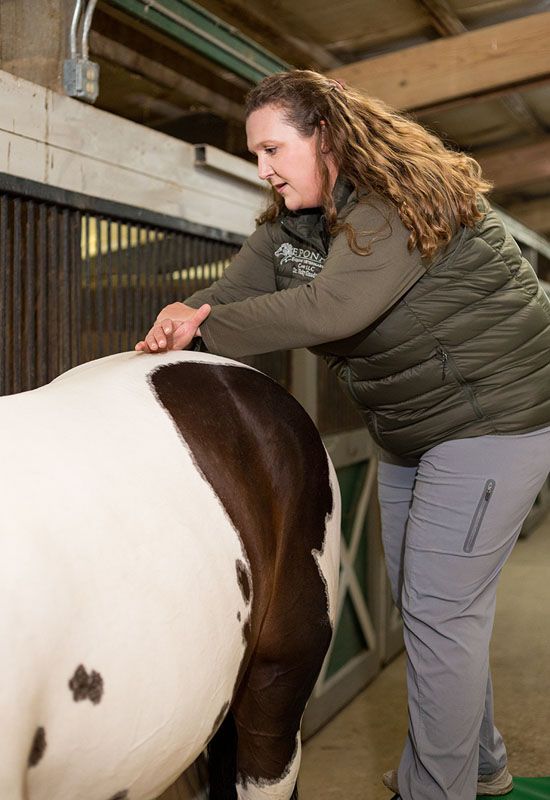

Maintaining a Healthy & Sound Horse
VSMT is a gentle, drug-free way to help your horse feel comfortable and willing to do their job. I recommend an initial series of 3 adjustments; subsequent recheck appointments will be based on your horses’ condition and their level of work. VSMT and acupuncture complement each other very well and I can perform them both on your horse at the same visit.
What does VSMT do for a horse’s body?
Is it really possible to put bones back into place on such a big animal? No, it is not. What I am doing as a licensed doctor certified in VSMT is feeling for the motion in each joint of your horse’s spinal column and limbs. Every joint in their body should have a certain amount of motion. When I find a joint with restricted motion, I employ a high-velocity, low- amplitude thrust – using my hands – to the targeted area, thereby restoring normal motion and improving muscle and nerve function. This manipulation helps your horse move better, relieves pain, and alleviates muscle spasms.
Does my horse need a VSMT adjustment?
Horses can demonstrate a range of different signs indicating they are in need of an adjustment. Common signs include: trouble picking up or maintaining canter or lope leads, bunny hopping at the canter or lope, irritability when the saddle is tightened, difficulty bending or rounding, flinching or avoiding being brushed in the saddle area, and even bolting or bucking when ridden.
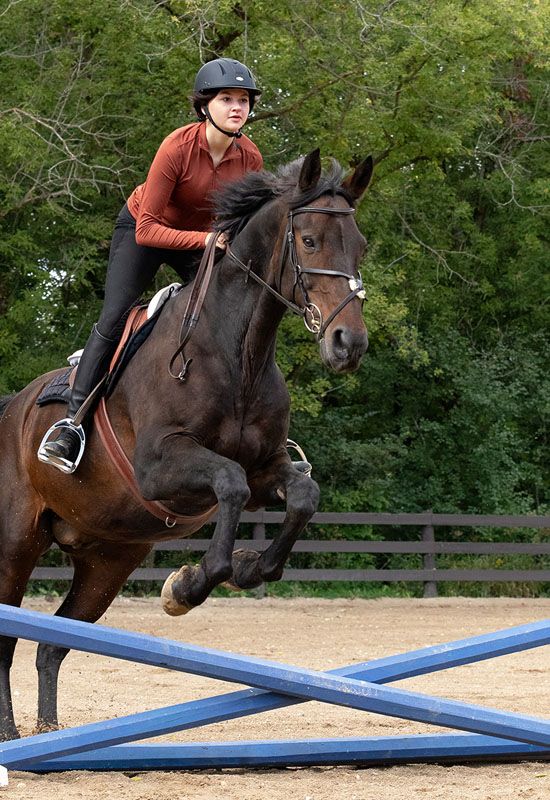
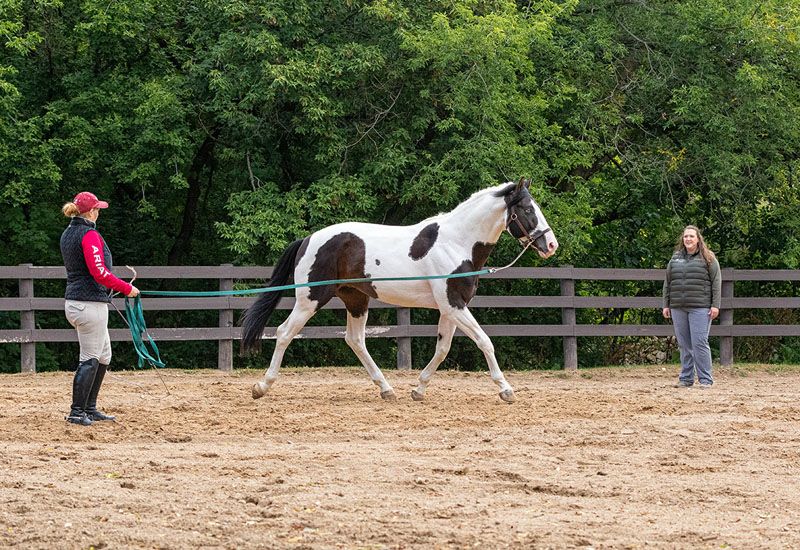

What should I expect at my VSMT appointment?
In my practice, when a client suspects that a VSMT adjustment may be in order, their horse is given a complimentary soundness check first. This soundness check also serves as an alert if the horse has what, in human terms, would be called a ‘pre-existing condition.’
It is important that the horse does not have a primary source of lameness or pain, such as an injured ligament or painful arthritis. If so, a lameness examination is recommended, followed by appropriate specialized treatment.
I can also perform a neurologic exam if your horse appears to have a deficit or compromised functionality. VSMT issues and neurologic diseases can appear with similar symptoms, which is why it is important that a veterinarian examines each patient before they receive an adjustment.
Book an Appointment
All services are by appointment only.
Serving the greater Milwaukee area in Wisconsin with seasonal availability in the Northwoods Wisconsin. Serving clients in Dodge, Jefferson, Washington, Waukesha, Milwaukee, Walworth, Ozaukee and Racine counties.
Available Monday – Friday from 9am to 5pm
Please avoid a $50 cancellation fee by rescheduling or cancelling your appointment 1 full business day in advance.
Please call for availability or fill out the contact form..
414-379-2464

